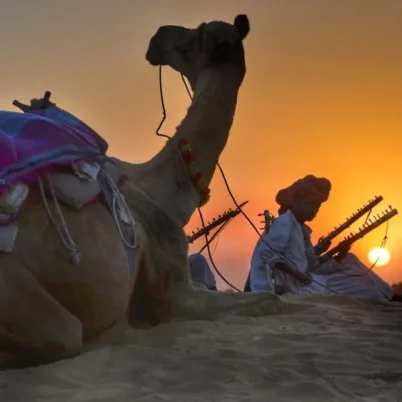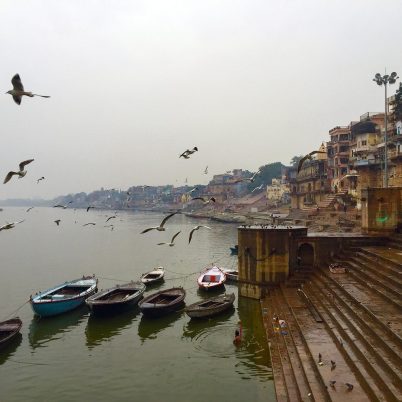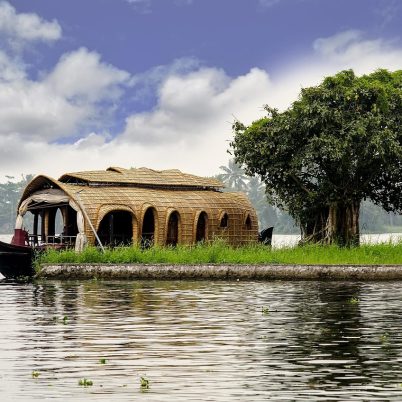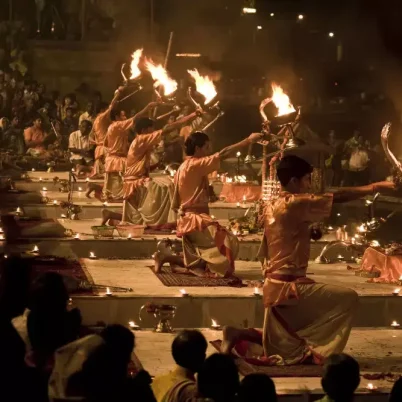
Blogger Alexandra Lattek shares experiences from her journey through India with India Someday. She also explores the lesser-known paths – read about her time in Pune, a city that tourists don’t frequent. But if the idea of exploring Pune and India in general sounds exciting to you, then write to us and we will help you plan a trip that perfectly aligns with your expectations.
The next stop on our adventure is Pune in India, a city of Osho disciples, young hipsters, fortune tellers, and temple ceremonies in the old town. As we see the first big neon signs from hotels, car dealerships, and companies through the window of the bus that takes us from Aurangabad to Pune, we think we must be almost there. But it takes another thirty minutes to reach the city center.
With more than three million inhabitants, Pune is one of India’s major economic metropolises. This city, situated on the edge of the Western Ghats, attracts large domestic and international companies. Known as the “Oxford of the East”, the city also attracts students from all over the world with its excellent universities.
Hometown of Guru Bhagwan Shree Rajneesh AKA Osho
Pune is still commonly known by its old British name, Poona, and is inseparably linked with the name Osho. The self-proclaimed guru Bhagwan Shree Rajneesh, who later called himself Osho, was born in Pune. he advocated for the liberation of the soul through a mix of meditation, tantric practises, Zen hypnosis, Tibetan pulsing, and other esoteric practices and philosophies. He also died in Pune at 59 years of age due to too much valium and other excesses.
Osho founded an ashram in Pune that attracted followers from all over the world and made him one of the most famous gurus. He then attempted to establish his own “Osho City” in Oregon through his project “Rajneeshpuram”, but failed. He was then deported from the USA and no country would accept him, after which he returned to Pune in the 1980s.
The apartment we are staying in during our visit to Pune is located in Koregaon Park, not far from the infamous Osho Ashram. The area is quite popular, chic, and verdant, with old colonial bungalows, upscale hotels, Western bars, and restaurants. After a second breakfast at the famous German Bakery – where hippies who traveled to Osho for soul liberation once gathered, and which became the target of a terrorist attack in 2010 – we set out in search of the Osho International Meditation Resort.
We can tell we are getting close by the Westerners in red robes busily walking up and down the small street with their shoulder bags, trying not to be late for the next meditation session or for some course with a name like “Squeezing the Juice of Life”. We are eyed somewhat disapprovingly. It is probably not appropriate to walk around here curiously as tourists equipped with cameras and guidebooks. And we quickly learn that you can’t just casually stroll into the sacred halls of the Osho Ashram.
One might expect that at a “Welcome Center,” you could get information about the facility for free, pick up a few brochures, or perhaps attend a trial session of Dynamic Meditation. Far from it. The lady at the counter next to the security checkpoint politely explains that we can purchase a day pass for 1,560 rupees. That’s a little more than twenty euros. However, before that, we would have to go through the registration process, which includes an HIV test. That costs another 1,400 rupees.
We decline. Instead, we try to catch a glimpse of the vast grounds through the gate, which, with its spa, swimming pool, cafés, tennis courts, and shops, resembles an all-inclusive vacation resort more than an ashram. But we are shooed away by a guard. We then ask our way to Osho Teerth Park and reach a beautiful green space with wild bamboo trees, winding paths, and Zen sculptures. No entrance pass is needed here. Of course, a sculpture of the guru is a must. Someone has placed a fresh flower in his hands. At least this way, we get a little contact with the Osho world.
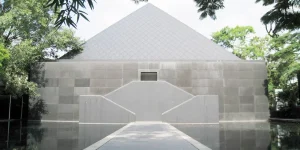 Osho Ashram, Pune
Osho Ashram, Pune
Peshwa – Old Town with Shaniwarwada Palace and Mahatma Phule Market
A stark contrast to the closed-off world of the Osho Ashram, Koregaon Park – where you can find everything an expat’s heart desires, from organic supermarkets and French patisseries to the Italian restaurant around the corner – and the modern shopping malls along MG Road, where the affluent young generation spends their money, is Pune’s old town. When we get out of the rickshaw in Peshwa, the old part of Pune, we feel like we’re back in the “real” India. “Want to buy some fruits?” and “Want to buy sugar cane juice?” No. We also don’t have time to have our palms read or to get a tattoo made.
Our destination is Shaniwarwada Palace, which we quickly pass by since there isn’t much to see besides a few old walls. Much more interesting are the small side streets with some well-preserved “wadas,” palatial wooden townhouses, and the Mahatma Phule Market.
This is the central market of the old town, where you can buy everything, and I mean everything: pajamas, T-shirts, socks, henna colors, mascara, buckets, pots, small Ganesha figures. And flowers, flowers, and more flowers, as the name of the market suggests since “Phule” means flower in Hindi. And coconuts – all offerings for the Puja (the prayer ceremony) in the nearby Hindu temple that we happen to pass by.
Although we don’t have any offerings with us, we also remove our shoes and join the “Darshan” line for prayer. In the altar room stands a large Ganesha, which is being painted by two temple members in preparation for Ganesh Chaturthi, the great festival in honor of the elephant god Ganesha. Unlike in a Christian church, the atmosphere here in the temple is very lively. In the Darshan line, there’s a lot of pushing as everyone wants to place their flowers or fruits. In the back, devotees sit, pray, and listen to the priest singing mantras. Unlike the Osho disciples in Koregaon Park, no one here is interested in us. Everyone is welcome.
Read: Best things to do in Pune
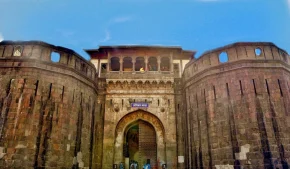 Shaniwar Wada, Pune
Shaniwar Wada, Pune
Conclusion: Pune – Definitely Worth a Visit
When I told a friend from Germany, who often travels to Pune, India for business, that the city was also on our itinerary, he asked what we would want to do there. He said there’s nothing interesting to see. While Pune may not have any major attractions, I have to disagree with my friend. I had wanted to visit Pune for a long time, especially because of the legends surrounding Osho and his ashram
I’ll have to explore that more closely another time. But even so, I found the visit to Pune definitely worthwhile. For me, traveling is not just about checking off the top tourist attractions, but about exploring how people live in a city. And Pune is a wonderful place to do that.
Pune is a typical example of a modern university and industrial city, where one can see how tradition and modernity merge in India. Glittering billboards, air-conditioned shopping malls, trendy little boutiques, chic coffee bars, and the gated, villa-like houses of the well-to-do in Koregaon Park contrast with the typical hustle and bustle of Pune’s old town, where you encounter traditionally dressed women and men going about their business in the bazaar or visiting the temple. Or you might spontaneously have your palm read by fortune tellers.
My conclusion: If you’re near Bombay, which is only three hours away by train, you should definitely consider making a side trip to Pune. It’s worth it.
See also: Best time to visit Pune
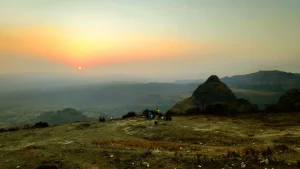 A sunset in Pune
A sunset in Pune
So if you want to experience the vibrant hustle and bustle of Pune, let us know and we will help you include this lively city in your travel plans!
Frequently Asked Questions
Pune is a city rich in history and culture of the Marathas. It is also known as “Oxford of the East”, owing to the many educational institutions and a booming IT sector here.
In terms of geographical area, Pune is slightly bigger than Mumbai, although Mumbai is much more populous than Pune.
Pune is famous for Paithani sarees, traditional Maharashtrian jewelry, handicrafts, and food items like bakarwadi and shrewsbury biscuits.
No, Pune is a landlocked city and does not have any beaches. However, there are many lakes in and around Pune.
helping you travel your way
Everything you need to know about India is here We have tried writing about everything you may need help with for your trip to India, If you need help in planning a trip to India Get in touch with us to to plan your trip of a life time.



